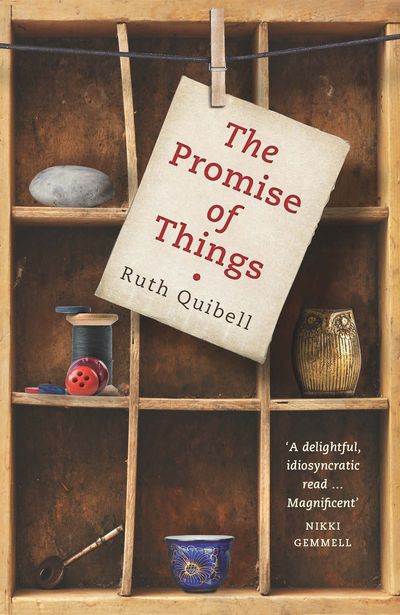←Back to The Promise of Things

An extract from “The Promise of Things”
"Downsizing", "purging", "editing" are all buzzword cures for getting rid of material excess. These practices are often central to the ethos of advocates of the simple life and minimalists, variously conceived along a spectrum from those who do a regular spring-clean to those who opt for a scorched-earth destruction of everything they own. The performance of British artist Michael Landy falls at the latter end of the spectrum. He, quite literally, made a radical break with all he owned.
Landy's purge was not in the pursuit of a simpler, less materialistic life for himself. It was for art. He called his 2001 art performance Break Down an "examination of consumerism". It entailed first cataloguing the 7227 objects he owned, then destroying them. He fed them along a conveyor belt, where workers specifically employed for the task smashed, cut up, shredded and in other ways pulled apart every object. From Landy's own art to a Savile Row jacket, from his father's coat to personal notebooks and letters, everything was pulped. Break Down was a brutal separation of an owner from his things in the most transparent and visceral of ways. There was no concealing what was being done. No slow drip-feed of unwanted clothes to the op shop. No passing on of toys to younger relatives. Nothing but patient, methodical destruction. The image that remains in my mind from watching the performance on YouTube is of stuffing being pulled from a teddy bear.
Landy saw his project as a questioning of consumerism and revealing how we end up with so much. "It's trying to ask," he told art historian Julian Stallabrass in an interview before the performance of Break Down, "what is it that makes consumerism the strongest ideology of our time? It's as much an open question as an attack." Art critic Sebastian Smee saw Landy's "systematic purge" as "euphorically liberating". For Smee, the destruction severed the sentimentality that insidiously adheres itself to the ordinary things we own. "How brilliant," Smee writes, "how hilariously theatrical and self-assertive, to catalogue them all and pulverise them in front of an audience of tens of thousands." In Landy's act, Smee sees an age-old liberation founded on destruction: of what has come before, of who we once were.
Another perspective is that such extensive discarding has become almost normal, even if we hide it from ourselves – as I do in the bag I keep in readiness for op-shop donations. We have to be ready to throw away if we are to consume more; we must set aside what consumer researchers call our "enduring involvement" with things. This entails a certain degree of deliberate ignorance or forgetting of the consequences. "We have to believe," as writer Andrew O'Hagan insightfully puts it in his essay in the London Review of Books, "that the litter of commodities melts into air, just as we do, or else we would have to live very differently in the world ... We don't admit it, but the idea of absence is a comfort to the present, for if nothing is away then everything is a deposit."
Was Landy's destructive performance an assertion of himself – a breaking free from the sentimental hold of the things he owned? Did the destruction of all that was tangibly material liberate his mind from the hold of materialism? Landy had spent three years documenting and preparing himself for the performance, and considerable time to rationalise the surrender of the things he owned. Still, the impact of destroying these objects had a deeper existential impact than he anticipated. When he was interviewed nine years later, by The Independent newspaper, Landy described the unexpected psychological and physical impact. "Witnessing your stuff being destroyed in front of 50,000 complete strangers is bizarre," he said.
"People turned up who I hadn't seen for years. It felt like I was attending my own funeral and I became obsessed with the thought that I was witnessing my own death."
His life, in his words, came to "a big full stop" after his public purge. While successfully revealing the enormity of the collections, and the mundane nature of much of what we keep, the performance left him with nothing – a gap that wasn't necessarily filled by the task of shopping to replace all the things that he'd lost. As an answer to materialism, wholesale purging might better be seen as a briefly cathartic but inarticulate scream, rather than a liberation.
This is an edited extract from The Promise of Things.